Solar electricity is like powder snow: when it’s there, you smile; when it’s not, you just work on the gear and hope for the best. Thing is, in Colorado we’re blessed (or not, considering this winter’s lack of snow) with mass quantities of clear crisp blue sky that cooks solar panels like you’re smoking ribs at a pit barbeque. So you get those electron buckets facing the sun, hook up the copper, and that green tingle runs up and down your leg because you know you’re doing the right thing. The greenie vibe was strong for me a few days ago, when we finally hit the big red switch and enjoyed being off the grid but under the lights. Check it all out, our Christmas present to WildSnow Field HQ! (And right here up front, let me thank Steve at Sunsense for his help as a consultant. I think he’s afraid to check out the owner-built system in person as it might burn up his VOM, but I think I can lure him up there once the skiing gets good and I assure him I’ll provide eye protection.)
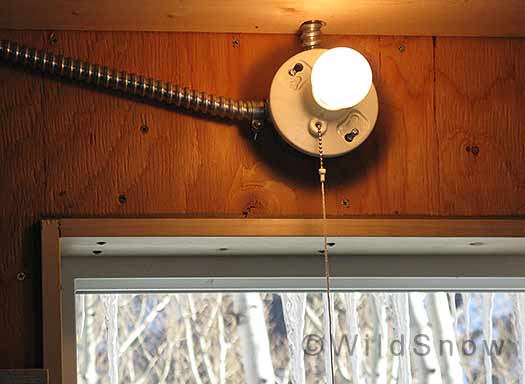
From the sun, to electric light! Sadly, I didn't experience the mythical green O when I flipped the switch, but I did get some tingles thinking of all the AA batteries we'd not be buying for our headlamps. Mainly, it is awesome having bright available light for cooking and that sort of thing. Most of our lighting uses basic Edison type fixtures, only we'll equip them with LED or CF bulbs to make sure we're well within our capacity for use several nights in a row.
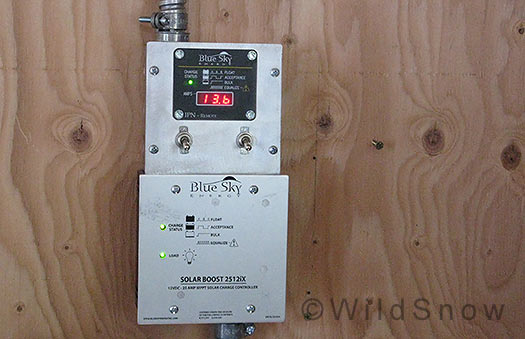
Blue Sky charge controller and IPN Remote. The remote readout is optional but without it you'd be in constant mystery as to your system status. A charge controller of some sort is mandatory if you have much panel wattage. This Blue Sky model provides several modes (depending on setup) and turns off the system automatically if battery voltage gets too low to prevent battery damage.
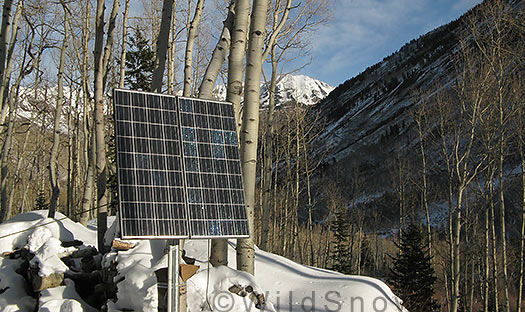
We installed our pair of Kyocera KD 1356X-LPU 135 watt panels on a temporary mast (attached to stump) and ran feed cable to trailer hut. We could mount the panels on the structure, but I was concerned about wind vibration and noise as due to orientation of the structure the panels would have to be on a mast and rack protruding from the roof. When we move the trailer, the panels are easy to take down and re-position -- and we could easily mount them on the trailer roof or walls.
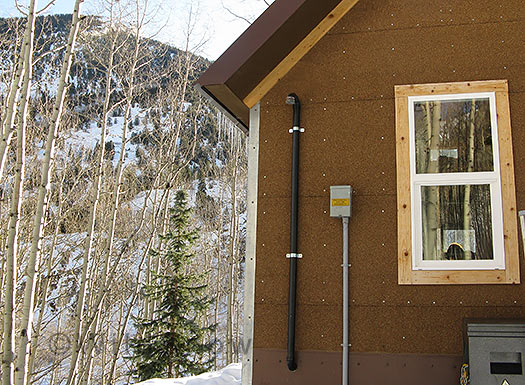
At the rear of the portahut (front of trailer), battery vent is the black stack, feed from panels heads up through conduit to breaker box where one 30 amp breaker provides panel disconnect, while another protects the whole interior system (we're small enough to only need one breaker for the residential load). The batteries also have a 30 amp blade fuse near the positive terminal connection, and I wired in a few 15 amp fuses near the interior accessory outlets. It wasn't intentional, but I already blew the battery fuse once, so at least I know it works. No, I am not an electrician.
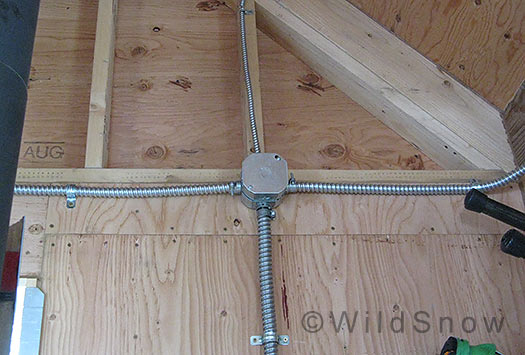
To save money and time I was originally planning on wiring the system with #10 romex on the interior surface, no conduit. But once I got going that just seemed too trashy, not to mention a bit on the funky side in terms of safety. So I used flex conduit for nearly everything but a few low amperage branches that are well protected by fuses and still covered with automotive wire loom.
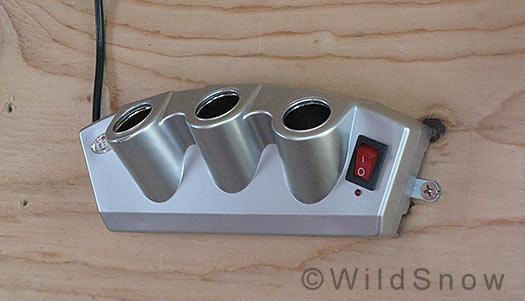
I provided a few 12v accessory outlets made with automotive 'lighter' sockets from NAPA. These are wired through a nearby 15 amp blade fuse, and include a nice on-off switch and small LED so you know when they're powered up. The idea with how all this runs is that we're mostly using the same accessories and systems we'd use in our truck or RV camper. Thus, we save money by sharing accessories between our different locations, as well as using stuff we're used to hacking together, such as automotive computer chargers, E-reader chargers, and that sort of thing.
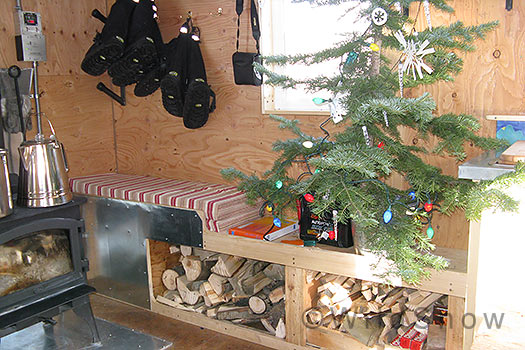
Interior, the day after Christmas. Battery box is behind sheet metal to right. Cushion is usually not exposed to stove heat. Everything is carefully designed for wood stove 'mobile home' clearance distances. Battery box actually stays too cool. Christmas tree lights are hooked up to a battery pack because I didn't have an extension cord, but they'd work fine off our PV system (I used a small inverter we had kicking around).
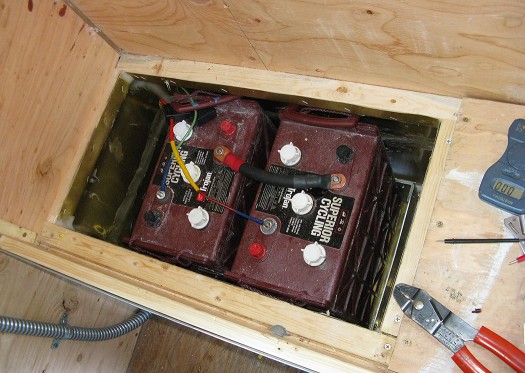
As pictured in our previous post about doing this PV work, here are the two Trojan L16H model batteries in the box, 125 lbs each, rated at 420 amp hours each. Battery box is ventilated to daylight, sealed from living space interior, and lined with non flamable materials.
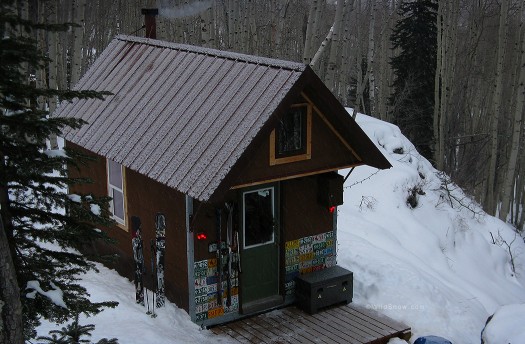
Just for fun I hooked up the trailer tail lights for porch lights with an interior switch. The actual trailer registration plate is under the skis to the left, license plate wall is decorative -- not sure what the County Mountie will think of those if we're hauling the portahut to a new location -- we'll probably have to cover them. And yes Virginia, that's a small deck that is totally NOT attached to the trailer.
WildSnow.com publisher emeritus and founder Lou (Louis Dawson) has a 50+ years career in climbing, backcountry skiing and ski mountaineering. He was the first person in history to ski down all 54 Colorado 14,000-foot peaks, has authored numerous books about about backcountry skiing, and has skied from the summit of Denali in Alaska, North America’s highest mountain.
